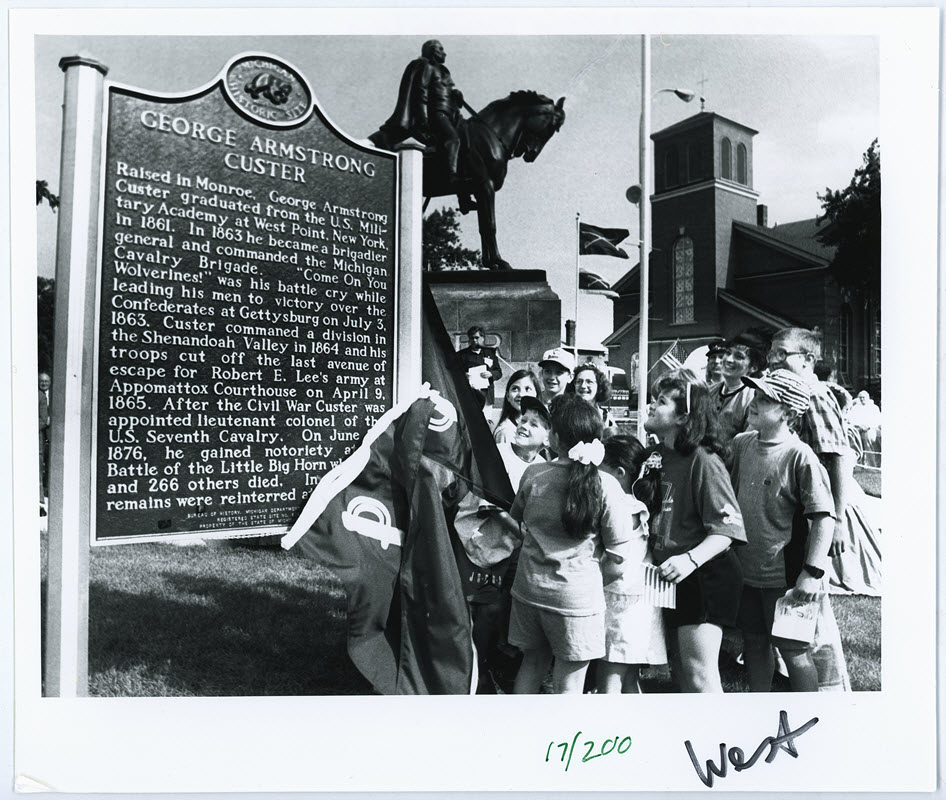George Armstrong Custer / "Sighting the Enemy"
Raised in Monroe, George Armstrong Custer graduated from the U.S. Military Academy at West Point, New York, in 1861. In 1863 he became a brigadier general and commanded the Michigan Cavalry Brigade. “Come On You Wolverines!” was his battle cry while leading his men to victory over the Confederates at Gettysburg on July 3, 1863. Custer commanded a division in the Shenandoah Valley in 1864 and his troops cut off the last avenue of escape for Robert E. Lee’s army at Appomattox Courthouse on April 9, 1865. After the Civil War Custer was appointed lieutenant colonel of the U.S. Seventh Cavalry. On June 25, 1876, he gained notoriety at the Battle of the Little Big Horn where he and 266 others died. In 1877 his remains were reinterred at West Point.Edward C. Potter’s sculpture “Sighting the Enemy” depicts General George Armstrong Custer pulling his horse up before entering battle. Custer is presented at a young age; he was only twenty-three years old when he faced the Confederate cavalry at Gettysburg on July 3, 1863. Potter, educated at Amherst College, Boston Art Museum, and in France, was selected as the artist because of his reputation for sculpting equestrian statues. Custer’s widow, Libbie, was instrumental in his selection. The monument was originally dedicated at Washington and First Streets on June 4, 1910, by President William H. Taft, Governor Fred M. Warner, and Libbie Custer. Michigan Cavalry Brigade veterans serving on the monument commission included Colonel George G. Briggs, Brevet Brigadier General James H. Kidd, and Lieutenant Frederick A. Nims.
Plaque via Michigan History Center